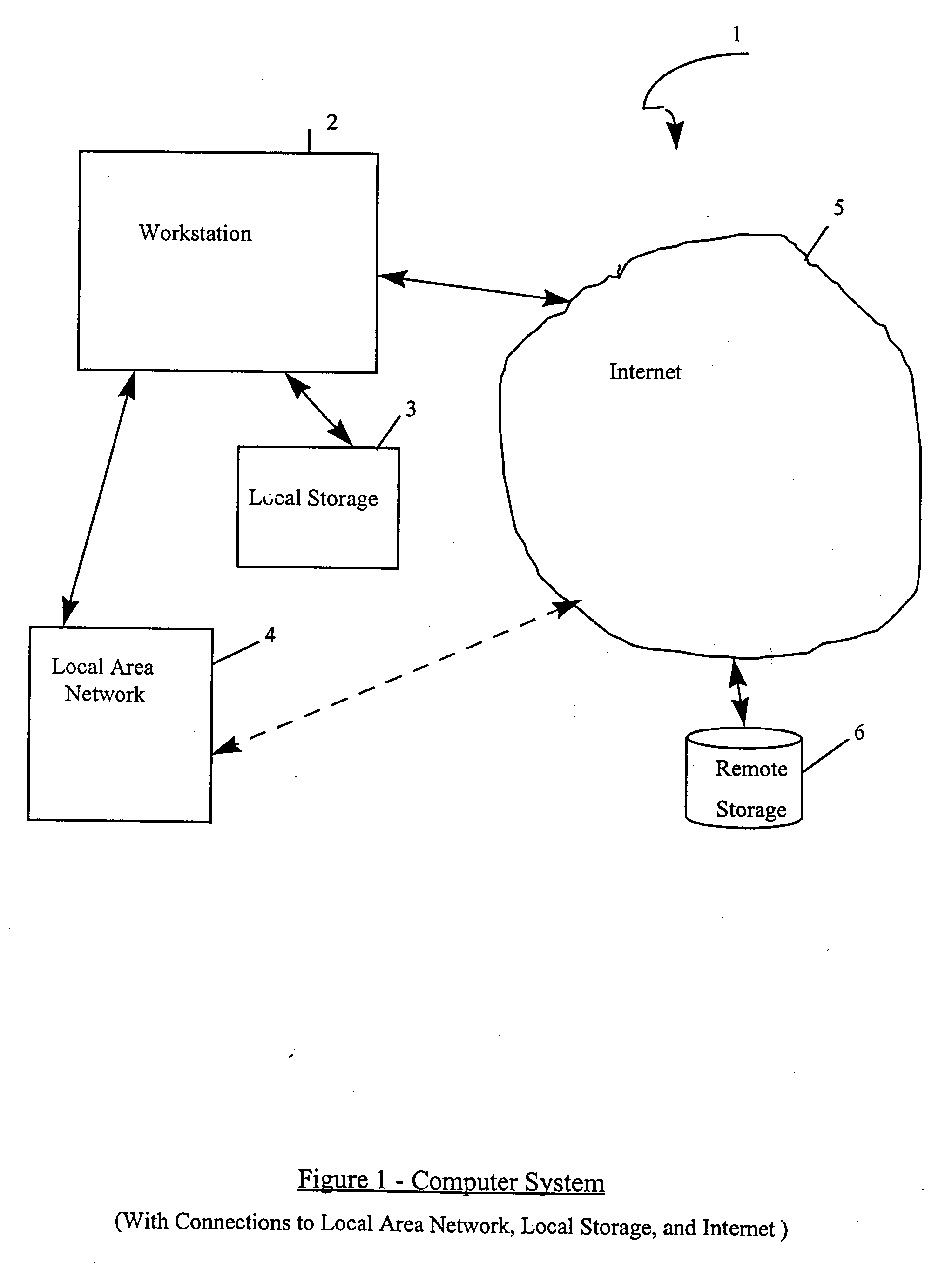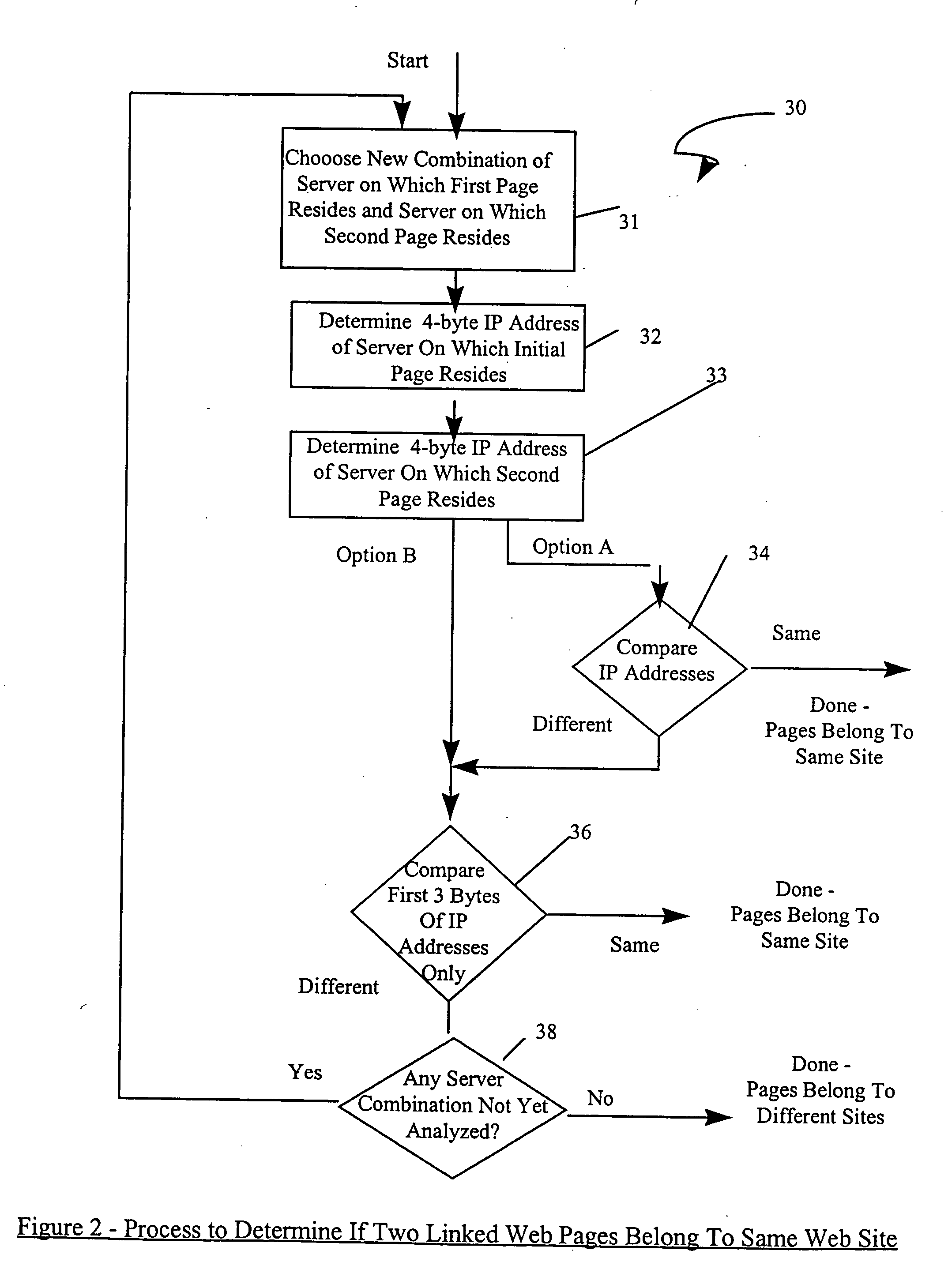First, to the extent that it is not possible efficiently and accurately to select pages which are part of sites from which electronic commerce can be carried out, a potential electronic commerce user, seeking a
list of electronic commerce pages or sites that may be of interest to him, will also receive too many pages or sites that are unrelated to electronic commerce.
This will both waste his time, and frustrate him.
Moreover, to the extent that pages that are part of electronic commerce sites are missed, the user will not receive as complete a
list of potentially-useful electronic commerce Web pages or sites as otherwise.
In determining whether a page is part of an electronic commerce site, however, it is not always possible to rely exclusively on information on that page; it is sometimes useful to make the determination based upon the characteristics of other pages in the site.
Prior efforts to solve this problem have not been completely successful.
If one simply assumes that two pages are parts of different sites if they are on separate servers, that leads to missing many pages in large sites which spread over multiple servers.
Nor is it useful to assume that any two sites that are linked are part of the same site.
Thus, treating any pages linked as part of a
single site would lead to vastly overestimating the size of a typical
Web site.
However, any such effort would be complicated, slow to execute, and of limited accuracy, given the similarity of content between similar sites that may be linked in some circumstances, and on the other hand the variety of content that may be contained within a
single site in other circumstances.
Nor is the need for such a technique limited to the problem of classifying Web pages as being part of electronic commerce sites or not.
The more material the Web contains, the more difficult it becomes for a user to formulate a specific search criterion that returns useful pages or sites ranked in order of potential interest to him, without returning so many pages or sites that he is overwhelmed.
Efforts to circumvent this problem to date have not been completely successful.
Users may conduct multiple searches, starting anew each time, but this is wasteful of their time, and frustrating, and their later efforts may be no more successful than their initial ones.
Users may try to guess how to modify a prior search to yield more useful results, but such efforts too may be unsuccessful, leaving users to spend substantial amounts of time sifting through material that is not of interest to find the minority of useful material.
Another problem is that if a search fails to locate certain useful material, the user may not even be aware that has happened.
But such methods of
site selection may not produce the sites that would be most useful to the user, and also may leave the user feeling that his interests have been subordinated to those of advertisers and others.
These problems in efficiently finding the sites of most use to the user may discourage people from taking full
advantage of Web resources, and in particular from using the Web for electronic commerce purposes.
But none of these efforts has been fully successful.
Moreover, they all share a single common deficiency.
Because when they begin users often do not know exactly what they want, or where the material they want is most likely to be located, they may be unable to describe the target of their search with any precision.
Thus, any such
algorithm, no matter how sophisticated, can only yield results of limited usefulness.
Another group of shortcomings in current methodology that limits the ability to provide useful lists of electronic commerce sites to potential users is the difficulty in maintaining in a conveniently and quickly
usable form information about pages or sites on the Web.
It is recognized that a new full search of the Web in response to each inquiry would take excessive time and
computer resources to be feasible for most purposes.
However, the Web is so large that it is not desirable to conduct a full new search of the Web for documents containing the specified word in response to the request.
Current techniques for
Web searching and retrieval that do not maintain information about documents in the collection in an accessible data base, other than by means of inverted term lists,
pose problems.
In particular, they do not organize and maintain information by the underlying document, rather than by the terms of interest.
This leads to a number of problems in providing useful lists of documents in response to user inquiries, which will now be discussed.
One problem that results from the failure to maintain information organized by the underlying document is the difficulty of maintaining accurate and up to date inverted term lists.
This is a problem because, in order for inverted term lists to be useful, they must be reasonably accurate.
If, however, as in the case of the Web, and electronic commerce in particular, the collection is dynamic, with documents being modified or even deleted frequently, inverted term lists can quickly become inaccurate.
This is a problem because, when a user makes a request, and inverted term lists are used to determine which documents may be responsive, incorrect documents will be returned if there have been changes in underlying documents in the collection which are not reflected in inverted term lists.
In the case of document collections as extensive as the Web, or even simply of all electronic commerce sites on the Web, there are a very large number of inverted term lists, and many of the inverted term lists may be very long.
Some prior efforts to avoid this problem have been unsatisfactory.
This process has the
advantage of reducing the
computer resources that must be devoted to the process of updating lists, but the
disadvantage is that significant resources are still consumed, and moreover grouping changes introduces delays in the updating process which reduce the accuracy of the results produced when the inverted term lists are used in responding to search queries.
Other problems also stem from the fact that conventional methods generally do not store information in a manner which is organized by document.
There is a further problem that occurs as a result of the fact that some conventional methods do not store information in a manner organized by document.
It is recognized that searches for useful documents can take a relatively long time to process.
 Login to View More
Login to View More  Login to View More
Login to View More 


